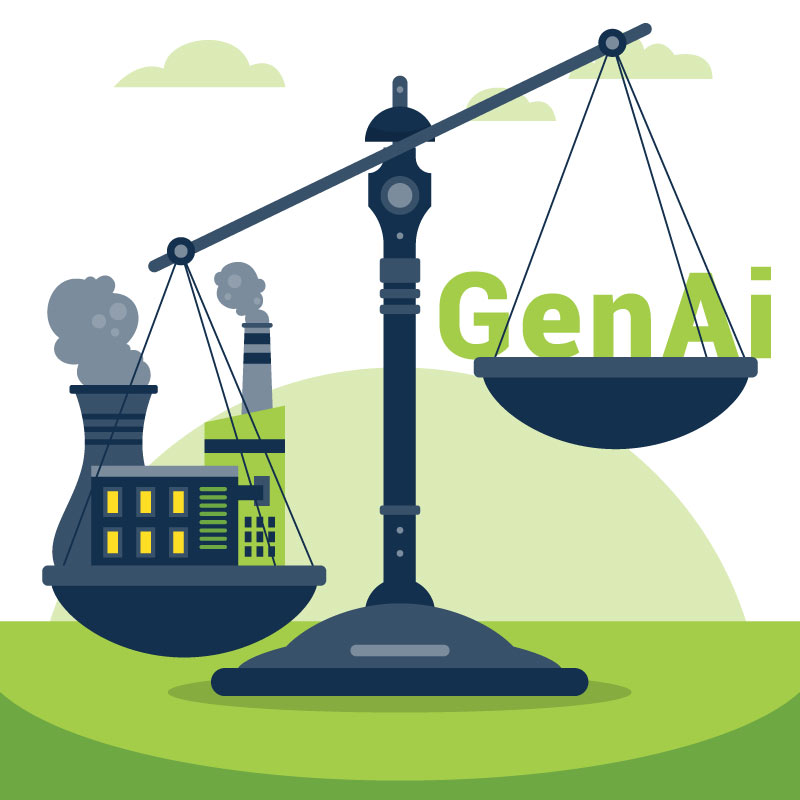More work to do
Nevertheless, stakeholder pressure on big tech and its customers will undoubtedly increase. Already, groups such as the Climate Action Against Disinformation coalition are issuing vocal warnings about the impact of AI. The campaign group Greenpeace has endorsed attempts to introduce new regulations around the assessment of AI’s environmental footprint.
The read-across for corporations and other organizations is disconcerting. CEOs who have promised to bring down emissions – and even to hit net zero in relatively short timeframes – may find GenAI use compromises their good intentions.
That creates a dilemma: should CEOs pass up the opportunity to exploit a technology they are consistently told offers them a route to competitive advantage or moderate their ambitions to decarbonize at speed?
In truth, neither strategy works. Instead, CEOs must deal with these issues head-on. Step one is to acknowledge the problem – to overtly recognize the potential impact of GenAI on their carbon footprints. Step two is to do something about it. And the good news is that there are possible mitigations.
One imperative is for large corporations to make more use of foundational LLMs rather than building their own models from scratch; this will require far less data, and therefore far less energy, reducing emissions accordingly. Equally, not every LLM is better because it is bigger – smaller models trained on carefully curated data may deliver better results while operating far more energy efficiently.
Location matters too. Edge computing enables businesses to lower their energy use by processing data in more places – perhaps close to the business, reducing travel time, or in a data center that has access to renewable energy. Similarly, having the right infrastructure can make a significant difference – AI models run on processors specifically developed for the purpose will use much less energy.
CEOs will rarely be best equipped to oversee these interventions. But they should be ready to challenge the CTO and the operations team on what they are doing in these areas – and the results they’re achieving. Investment in GenAI may now be non-negotiable for many businesses, but it must not come with a blank cheque for emissions.






